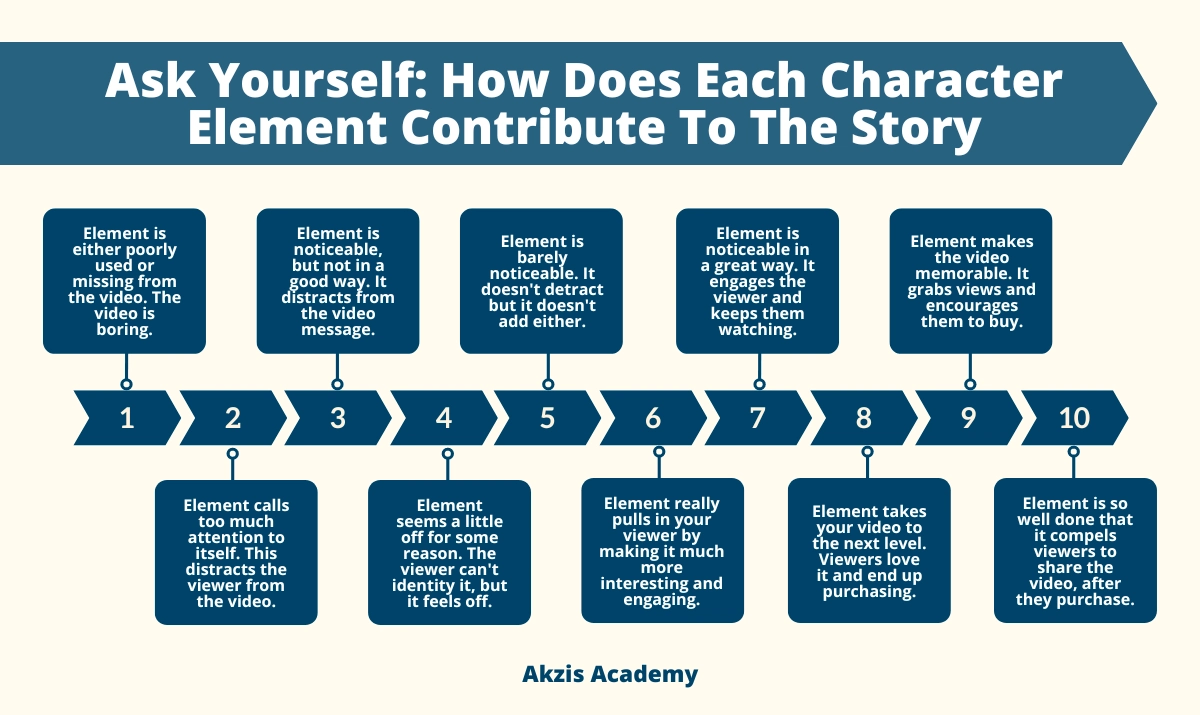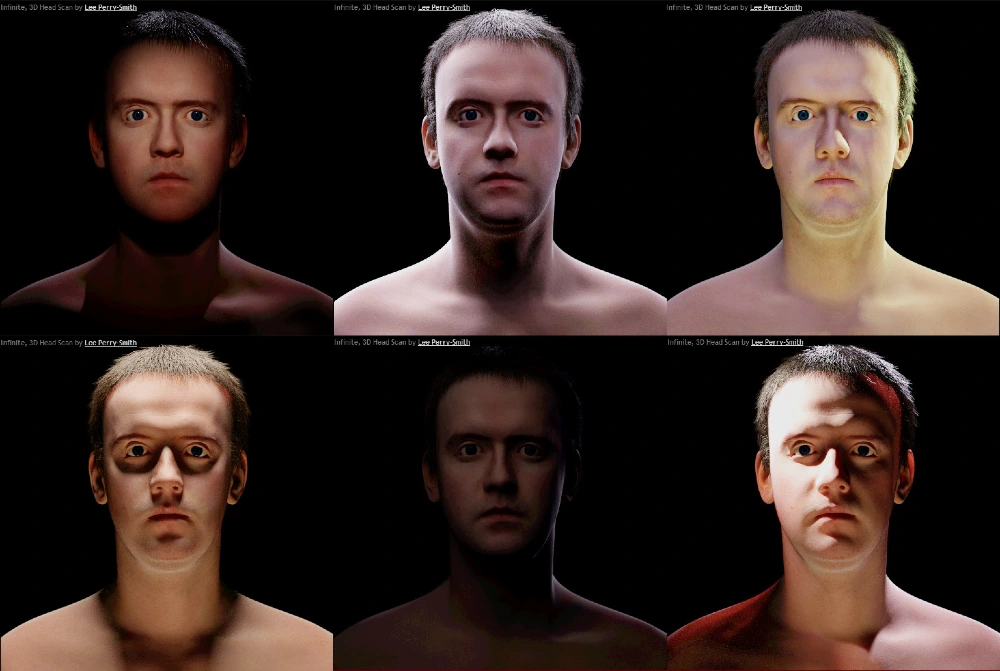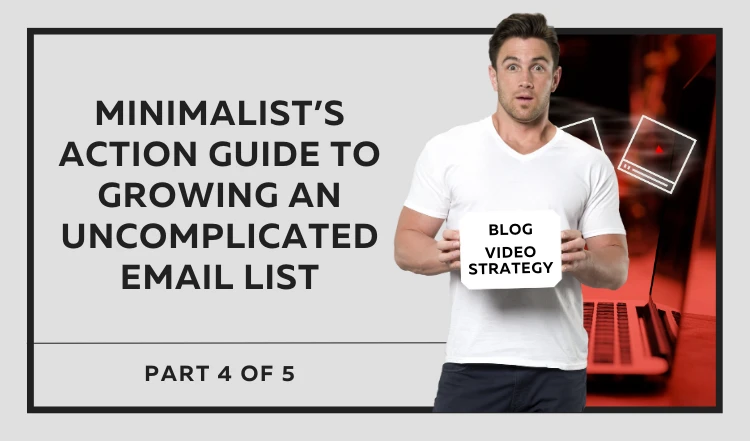Are you tired of creating videos that fall flat? Maybe you’ve got the script down pat, but something just doesn’t feel right? Well, it’s time to meet the eight characters of video story selling!
No, we’re not talking about Snow White and the Seven Dwarfs here, but these characters are just as crucial to the success of your video. From the location to the B roll to the music, these elements all play a role in telling your story and keeping your audience engaged.
In the world of graphic design, there’s this theory that’s been around for years called the Crystal Goblet theory of graphic design. It’s all about simplicity and focusing on the content of your message. But hold on a minute! When it comes to video, this theory doesn’t quite hold up.
Why? Well, because video is a time-based medium, and you’re asking someone to watch it for a longer period of time. That means you need to grab their attention with more than just a clear container like a crystal goblet. You need more ornamentation and layers to keep people engaged.
So, what does this mean for you? It means that each medium has its own rules and parameters, and it’s essential to create marketing that’s specific to the platform you’re using. Whether it’s a sales page, an email, a podcast, a webinar, or an in-person event, you need to tailor your message to fit the medium.
So, the big question is, is your video an instant transmission or a time-based transmission? And how do you make sure it’s interesting enough to hold someone’s attention for the whole thing?
Now, there are a couple of exceptions to the rule of going for a crystal goblet approach to video production.
First, if you’re already a thought leader in your industry, like a J Abraham or a Jeff Walker, you can get away with simpler videos because people are already trained to listen to you. But for the rest of us, we can’t just copy what the top dogs are doing and expect the same results.
The other exception is for super short videos, like one to three minutes, where you just need to convey a quick and simple message. But even then, using the framework I’m about to teach you will make your videos more captivating and engaging.
So, let’s dive in!
When it comes to creating videos, it’s important to understand the medium and tailor your approach to the platform you’re using. For example, if you’re doing a stage presentation, you need to think about how to keep your audience engaged and interested for the entire time.
But what about learning? Well, in that case, you can use more of a crystal goblet approach, where you focus on the content and simplify the delivery. It’s all about understanding the medium and adapting your approach to get the best results.
Let me tell you a little secret about video marketing. If your videos are being seen by people who already know and love your brand, they’re more forgiving when it comes to the format. So, a simple talking head video can still be effective if your audience already has a relationship with you.
But, if you’re trying to sell to new customers, you’ll need to step up your game. A basic sales video might not cut it. However, if the video is part of a larger marketing campaign, and the audience is already sold on the product, a simple and straightforward video message can be just as effective.
Unlock the Full Potential of Video Story Selling with These 8 Key Elements
- The Script: the foundation of the video, the words and message being conveyed
- The Speaker: the person delivering the message, their tone and style
- The Visuals: the images and footage that support and enhance the message
- The Location: the environment in which the video takes place
- B-Roll: additional footage used to complement and illustrate the message
- Graphics: titles, text, animations, and other visual elements used to convey information
- Music: the background music that sets the tone and adds emotion
- Lighting: the use of light and shadows to create mood and atmosphere.
When most people think about creating a video for marketing and sales, they focus on the script and what they’re going to say. But with so much video content being uploaded to platforms like YouTube every minute, simply talking to the camera isn’t enough anymore. People get bored and tune out quickly.
So, how can we make video marketing more engaging? Well, the first step is to realize that just having a great message isn’t enough. You need to capture your audience’s attention and keep them engaged.
Even the best-produced videos struggle to keep people watching until the end these days.
So, let’s put some personality into those videos!
Make them funny, conversational, and memorable. Think about using visuals, animation, and other creative elements to help tell your story. When you make your videos more engaging, your audience is more likely to stick around and ultimately buy from you.
Of course, your script is crucial – it’s like the main character of your video. But equally important is your performance. Even the best script won’t keep people watching if you’re not delivering it well. So, practice and work on your delivery until you’re confident and engaging.
I experienced this firsthand when doing webinars for three days in a row. Even though my script was the same, my performance improved each day, and it made a huge difference in our conversion rates. So, your energy and enthusiasm can really impact your viewers’ engagement.
But it’s not just your performance that matters – your wardrobe and physical appearance are important too. Think of them as characters in your video. If your appearance is distracting or off-putting, viewers may not even pay attention to what you’re saying. So, make sure your wardrobe is appropriate and neutral.

Remember, the best videos have depth, complexity, and contrast – just like characters in a story. Think about your setting, lighting, sound, and other elements that can add to the overall experience.
This eight character approach will help you create compelling videos that viewers will love. So let’s keep going, on to the next element.
Location. Location. Location. Yes, we’ve got the location – this is what’s happening in the background of your video. Unless you’re on a white screen, you’ve got a choice to make about the environment you’re filming in. And even if you’re using a green screen, you can replace it with an artificial environment. Don’t underestimate the power of location – it can really bring your video to life!
Next up, we’ve got B roll and stock footage. This is all the extra footage and imagery you add to your video to complement what you’re saying. Sometimes, you can say more with an image than with words. For example, showing a time-lapse of yourself working can convey the feeling of working hard much more effectively than just saying it. And if you’re wondering what B roll is, it comes from the term “B camera” – it’s all the footage that’s not the main focus of the shot.
Then we have graphics – titles, text, slides, and animations that help you convey your message. If you’re talking about numbers or pricing, it’s always helpful to have them on the screen, so your viewers can see them clearly.
Second to last, we’ve got music and sound effects.
Music can really drive the narrative of your video forward and create the right mood for your message. And let’s be honest, it’s hard to watch a sales video without any music these days.
So, we’ve talked about the first seven characters that make up a successful video, but let’s not forget the last one: lighting!

Now, I know what you’re thinking, “Lighting? How can that be a character?” But trust me, my friend, lighting can make a huge impact on the mood and tone of your video.
Sometimes you want to keep things neutral, but other times, you can get creative and make lighting a dominant character.
Just like the other elements, there’s a hierarchy of characters when it comes to lighting. It can be a supporting character or a primary character, depending on what you want to convey. The key is to choose which elements you want to stand out and which ones you want to take a backseat.
Now, when it comes to video, it’s not just about the script. Sure, the message is important, but we’re dealing with a four-dimensional medium here! You’ve got space, time, and all the elements we’ve talked about. That’s why we need a multidimensional approach to really make an impact.
So, remember, lighting may seem like a small detail, but it can make a big difference. It’s all about choosing the right characters to take the lead and letting the others support the overall message and creative choices.
Now go out there and create some killer videos that sell like hotcakes. And remember, don’t be afraid to add some humor and personality to make your content stand out!





